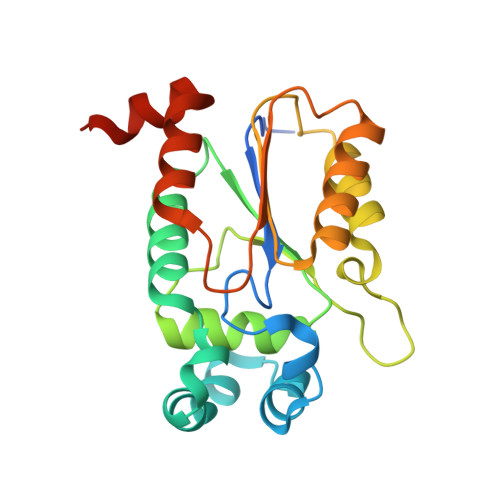Legionella pneumophilaeffector Lem4 is a membrane-associated protein tyrosine phosphatase.
Beyrakhova, K., Li, L., Xu, C., Gagarinova, A., Cygler, M.(2018) J Biological Chem 293: 13044-13058
- PubMed: 29976756
- DOI: https://doi.org/10.1074/jbc.RA118.003845
- Primary Citation of Related Structures:
6CDW, 6CGJ, 6CGK - PubMed Abstract:
Legionella pneumophila is a Gram-negative pathogenic bacterium that causes severe pneumonia in humans. It establishes a replicative niche called Legionella -containing vacuole (LCV) that allows bacteria to survive and replicate inside pulmonary macrophages. To hijack host cell defense systems, L. pneumophila injects over 300 effector proteins into the host cell cytosol. The Lem4 effector (lpg1101) consists of two domains: an N-terminal haloacid dehalogenase (HAD) domain with unknown function and a C-terminal phosphatidylinositol 4-phosphate-binding domain that anchors Lem4 to the membrane of early LCVs. Herein, we demonstrate that the HAD domain (Lem4-N) is structurally similar to mouse MDP-1 phosphatase and displays phosphotyrosine phosphatase activity. Substrate specificity of Lem4 was probed using a tyrosine phosphatase substrate set, which contained a selection of 360 phosphopeptides derived from human phosphorylation sites. This assay allowed us to identify a consensus pTyr-containing motif. Based on the localization of Lem4 to lysosomes and to some extent to plasma membrane when expressed in human cells, we hypothesize that this protein is involved in protein-protein interactions with an LCV or plasma membrane-associated tyrosine-phosphorylated host target.
- From the Department of Biochemistry, University of Saskatchewan, Saskatoon, Saskatchewan S7N 5E5 and.
Organizational Affiliation:



















